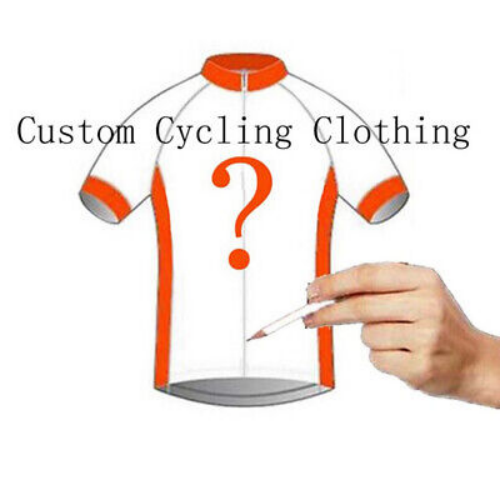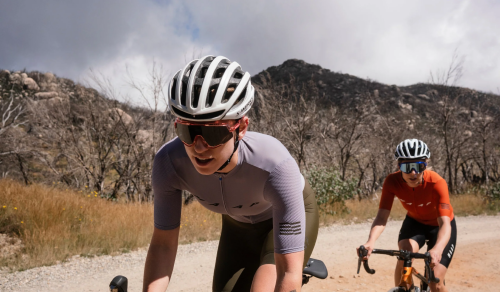The goal of speed and efficiency is of the utmost importance in the arena of professionally competitive cycling. Cycling equipment producers and cyclists alike are always looking for new methods to improve the aerodynamics of their products and reduce the amount of drag they experience, which eventually leads to improved performance on the road. Due to the fact that it plays a significant part in the overall aerodynamic profile of the cyclist, the design of short-sleeve cycling apparel is one component of the cycling industry that is of particular importance. When it comes to short-sleeve cycling wear, this article goes into the unique aerodynamic concerns and design characteristics that it is important for cycling apparel producers and cyclists who are discerning to be aware of.

The critical role that aerodynamics play in cycling
The concept of aerodynamics is extremely important in the sport of cycling since it has a direct influence on the speed and energy economy of a cyclist. Air resistance, often known as drag, is something that cyclists experience when they are moving forward, and it can significantly slow down their forward movement. It is possible for cyclists to achieve higher speeds with the same amount of effort if they reduce the amount of drag that they experience, or they can keep the same speed while exerting less energy. It is at this point that the design of cycling equipment, notably jerseys with short sleeves, becomes quite important.
Considerations Regarding Aerodynamics When Wearing Short Sleeve Cycling Clothing
Sleeve Design
The design of the sleeves on cycling jerseys with short sleeves can have a considerable impact on the rider’s ability to maintain aerodynamics. Tight-fitting, form-fitting sleeves that hug the curves of the cyclist’s arms are often favored because they lessen the amount of turbulent airflow that is created and therefore minimize the amount of drag that is experienced. The creation of pockets of air that disturb the flow of aerodynamics can be caused by sleeves that are loose or baggy, which can result in increased resistance.
Length of the Sleeves
The length of the sleeves is another crucial factor to take into consideration. By minimizing the overall surface area that is exposed to the wind, sleeves that are shorter and stop just above the elbow can assist lessen the amount of drag that is experienced. Longer sleeves that extend closer to the wrist may cause greater drag; however, the specific benefits of shorter sleeves might vary based on the body type of the cyclist and the riding posture that they are in.
Surface Textures and Fabrics of Sleeves
Sleeve Fabrics and Textures
The selection of the fabric and the surface texture of the sleeves can also have an effect on the aerodynamics of the garment. Fabrics that are smooth, lightweight, and closely woven are frequently favored because they reduce the amount of turbulent airflow that would otherwise be created. It is also possible for some manufacturers to experiment with fabrics that have dimples or textures. These fabrics have the ability to disrupt the boundary layer of air that is flowing over the surface, which might potentially reduce the amount of drag in certain situations.
Sleeve Panels and Seams
The construction and positioning of sleeve panels and seams can also have an effect on the aerodynamics of a garment. Improved aerodynamic performance can be achieved by the use of seamless sleeves or panels that are deliberately arranged to minimize disturbances to the flow of air.
Compression of the Sleeves
The degree of compression that is applied to the sleeves can also have an effect on the aerodynamics of the garment. A reduction in drag can be achieved by avoiding the formation of air pockets and maintaining a smooth airflow. Sleeves that are tight, compressive, and hug the arm snugly can help achieve this.

Considerations from Cyclists and the Industry
When viewed from the point of view of cyclists, the aerodynamic features of cycling gear with short sleeves are of the utmost significance. Cyclists who compete in competitive events, particularly those who take part in time trials or triathlons, are always looking for ways to improve their speed and efficiency. To guarantee that their cycling equipment, particularly the short-sleeve jerseys, is designed in a way that maximizes their aerodynamic profile and reduces the amount of drag they experience, they carefully examine the design of their cycling apparel.
YSTAR Wear are acutely aware of the significance of aerodynamics and are continually conducting research and development on new technologies and design techniques in order to improve the performance of their short-sleeve cycling jerseys. YSTAR Wear are also conscious of the relevance of aerodynamics. For the purpose of testing and refining our designs, we frequently work along with wind tunnel facilities, computational fluid dynamics (CFD) experts, and professional cyclists. This helps to ensure that YSTAR Wear ‘s products are at the forefront of aerodynamic innovation.

Conclusion
When it comes to cycling, the aerodynamic design of short-sleeve cycling clothing is vitally important since it helps cyclists achieve their goals of speed and efficiency. The overall aerodynamic profile of the cyclist is influenced by a number of factors, including the design of the sleeves, the length of the sleeves, the fabric, and the compression. By gaining an understanding of these aerodynamic issues and applying them into the design of short-sleeve cycling jerseys, designers are able to supply cyclists with clothing that enhances their performance and assists them in accomplishing their competitive objectives. There is little doubt that the development of short-sleeve cycling gear will continue to be an important area of study as the cycling industry continues to push the frontiers of aerodynamic innovation.



